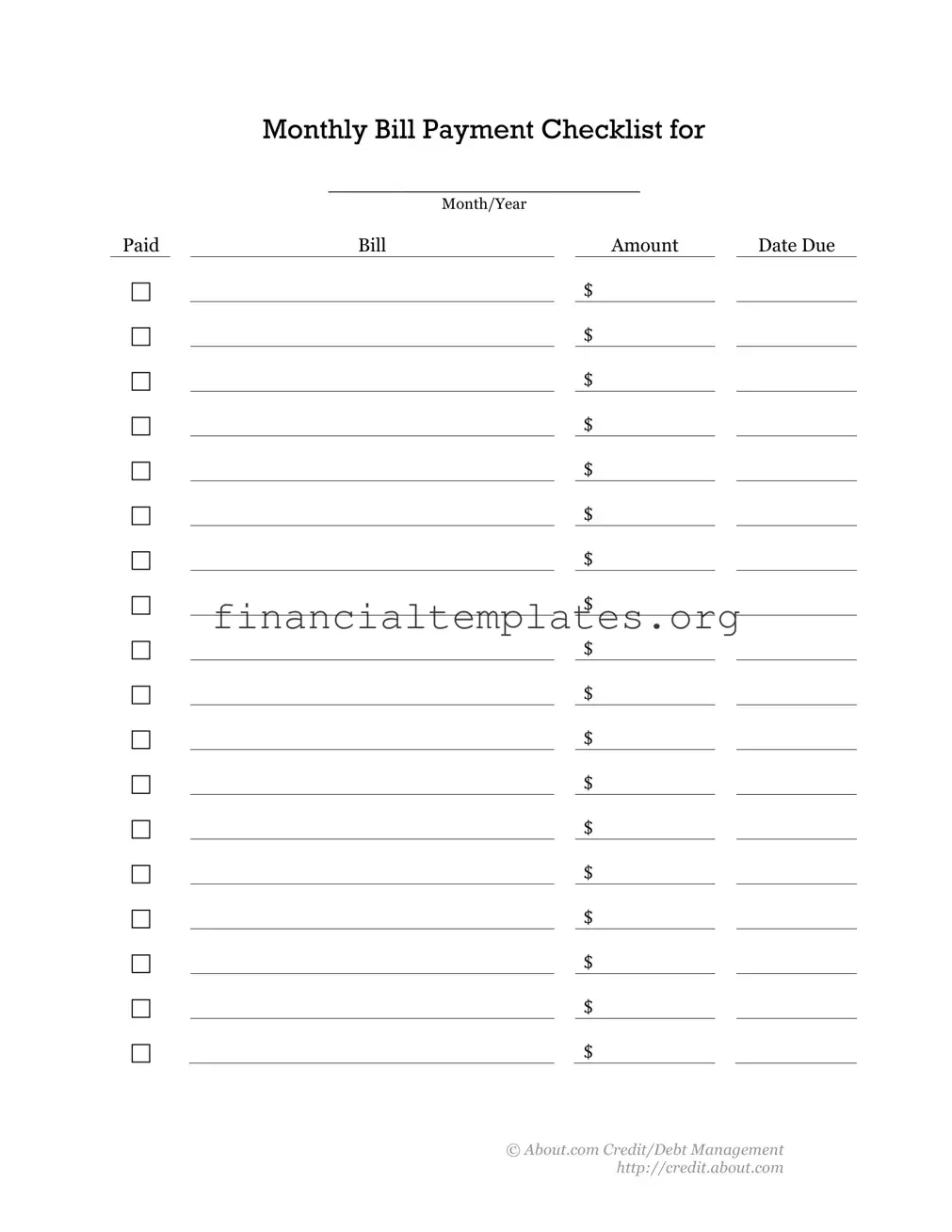A Budget Planner is a document that shares a fundamental resemblance with the Bill Payment Checklist, primarily in its purpose of facilitating financial organization. Where the Bill Payment Checklist helps track when and what bills are due in a given month, a Budget Planner broadens this scope to include detailed projections of income versus expenditures over a similar period. Both documents are crucial for maintaining a clear view of one's financial health, ensuring timely bill payments, and avoiding overspending by laying out anticipated monthly financial activities.
The Debt Repayment Plan is another document closely related to the Bill Payment Checklist. It is specifically designed for individuals working to pay off debts. This plan not only lists the debts owed but also includes a schedule for their repayment, similar to how the Bill Payment Checklist organizes bill payments by due dates. Both documents are essential for staying on track with financial obligations and for formulating a strategy to improve one's financial situation by methodically reducing debt.
An Expense Tracker is akin to the Bill Payment Checklist in its role of monitoring financial outflows but focuses more broadly on all expenses, not just bills. It provides a detailed record of where money is going each month across various categories, enabling a meticulous review of spending habits. The core similarity lies in their mutual goal of promoting financial discipline, with the former capturing every monetary expenditure and the latter focusing specifically on the timely settlement of bills.
The Financial Calendar is closely related to the Bill Payment Checklist by serving as a visual representation of financial deadlines throughout the year. It marks important dates such as bill due dates, tax deadlines, and payment reminders, providing an annual view that complements the monthly focus of the Bill Payment Checklist. Both tools are indispensable for effective financial planning, ensuring individuals are aware of and can prepare for upcoming financial responsibilities in advance.
A Savings Goal Tracker is, in essence, a motivational tool that operates on principles similar to those of the Bill Payment Checklist, but with a focus on future financial aspirations rather than immediate obligations. It helps users set, monitor, and achieve specific savings targets over time. While the Bill Payment Checklist ensures current financial commitments are met, the Savings Goal Tracker encourages the proactive accumulation of wealth for future use, encompassing both sides of smart financial management.
The Investment Tracking Sheet is a document designed for individuals who have ventured into investments, paralleling the Bill Payment Checklist by providing an organized method to monitor performance and deadlines associated with investments, such as dividend payments or maturity dates. Both documents assist in keeping an accurate record of financial dealings, albeit with different focuses: maintaining timely bill payments versus tracking investment growth and responsibilities.
The Financial Goal Planning Sheet shares similarities with the Bill Payment Checklist by facilitating a structured approach to achieving financial objectives. It helps users identify and articulate short-term and long-term financial goals, much like how the Bill Payment Checklist aids in the management of monthly financial liabilities. Both documents are crucial for strategic financial planning, enabling individuals to navigate their present financial landscape while also preparing for future aspirations.

